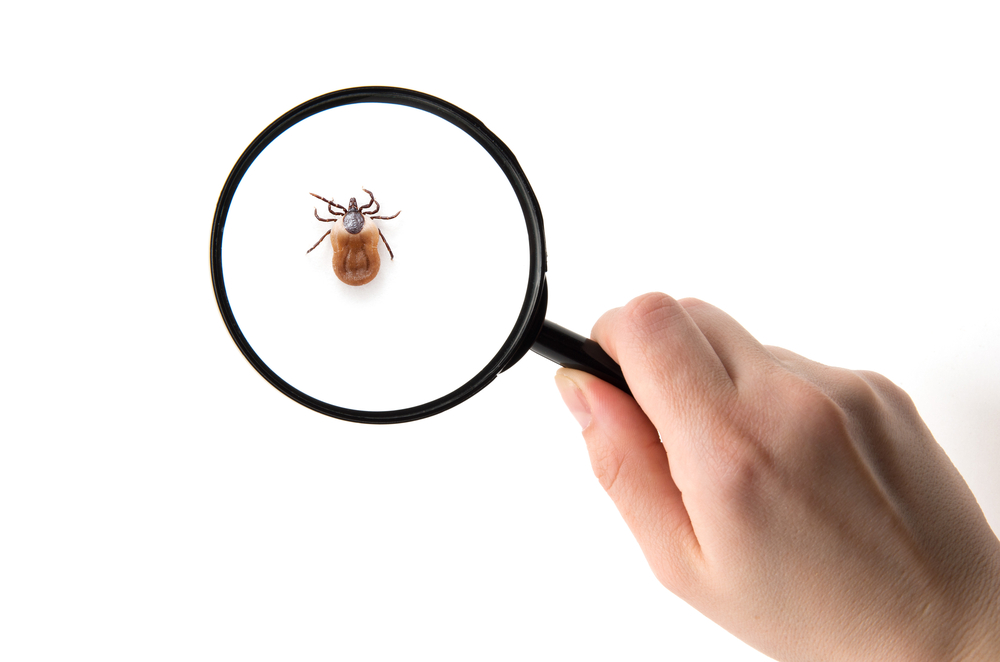Ticks
Found a Tick?

What to do if you find a Tick

If you find a tick attached to your skin, you’ll want to remove it as soon as possible. Once a tick has latched on, it begins the process of feeding on the blood of its host. The longer the tick is attached, the higher the risk it will transmit Lyme disease or other tick-borne infections into the bloodstream.
This recent study confirms what Lyme specialists have seen in practice: There is no minimum attachment time for transmission of a Lyme disease infection. The arbitrary 36 hour minimum attachment presumption is extremely misleading and can have life-altering consequences if an infection is not treated early.
Follow these steps if you find a tick:
1. Do Not Panic!
2. Find fine-pointed tweezers.
3. Grab close to the skin.
4. Pull it straight up slowly, without twisting or squeezing.
5. Disinfect the area.
6. Place in a plastic bag and send to a lab for testing.
If you know or suspect a tick bite, consider prophylactic antibiotic treatment. The medical care provider and the patient should carefully weigh the risks and benefits of prophylactic antibiotic treatment in the case of a known tick bite, even before symptoms appear. The Lyme bacteria can reach the central nervous system within 24 hours. Disseminated infection can be much more difficult, if not impossible, to eradicate. It is also critical to consider that in the majority of cases, the length of time of attachment to human hosts cannot be determined with accuracy.
How to Remove a Tick
According to the CDC, the standard tool for tick removal is a pair of fine-pointed tweezers, though there are other gadgets and devices on the market. The advantage of a pair of tweezers is they allow you to get in between your skin and the tick, grasp the tick’s mouthparts, and remove the tick with firm pressure. Avoid using non-science-based remedies, like covering the tick with petroleum jelly, burning it with a match, or applying essential oils to it. These can agitate the tick and cause it to regurgitate pathogens into your bloodstream.
To learn more about how to remove a tick properly, watch this video by Kateryn Rochon, Ph.D., Assistant Professor of Veterinary Entomology from the University of Manitoba in Winnipeg, Manitoba, Canada.
After tick removal, cleanse the site of the bite and your hands with rubbing alcohol or warm soap and water. Never crush a tick with your fingers. Although some healthcare providers may adopt a wait-and-see approach to developing Lyme symptoms, we recommend discussing preventative treatment measures with your doctor or a Lyme specialist, such as a Lyme-literate medical doctor (LLMD). The initial symptoms of Lyme disease can mimic the flu, and the number of people who develop a Lyme rash ranges from 30% to 80%. . Prompt and early intervention of the illness is associated with more favorable treatment outcomes and reduced incidences of persistent, chronic Lyme disease.
After Removal
We suggest saving the tick for testing to see if it carries pathogens like the Lyme bacteria Borrelia burgdorferi or other infections that could be harmful to humans. Several laboratories around the country perform tick testing. Click the link below to learn more.
Typical testing for Lyme disease measures IgM and IgG antibodies. The body produces IgM antibodies in response to a recent or active infection. After you’ve had an infection for a period of time, IgG antibodies may be generated and could indicate the presence of a later stage or persistent infection. We recommend using Clinical Laboratory Improvement Amendments (CLIA) certified laboratories and have compiled a list.


